CNC (Computer Numerical Control) equipment refers to automated machine tools that operate through programmed instructions to perform precise manufacturing processes. These systems replace manual control with computerized commands, enabling high-accuracy machining of metals, plastics, wood, and composites. The core principle involves converting digital designs (typically CAD models) into numerical code (G-code) that dictates tool movements, spindle speeds, and other operational parameters. Modern CNC equipment spans various machine types—including mills, lathes, routers, grinders, and laser cutters—each specialized for specific material removal or forming techniques. Industrial-grade CNC systems achieve positioning accuracies within ±0.005mm (±0.0002 inches) and repeatability of ±0.002mm, making them indispensable for aerospace, automotive, and medical device manufacturing where micron-level precision is critical.
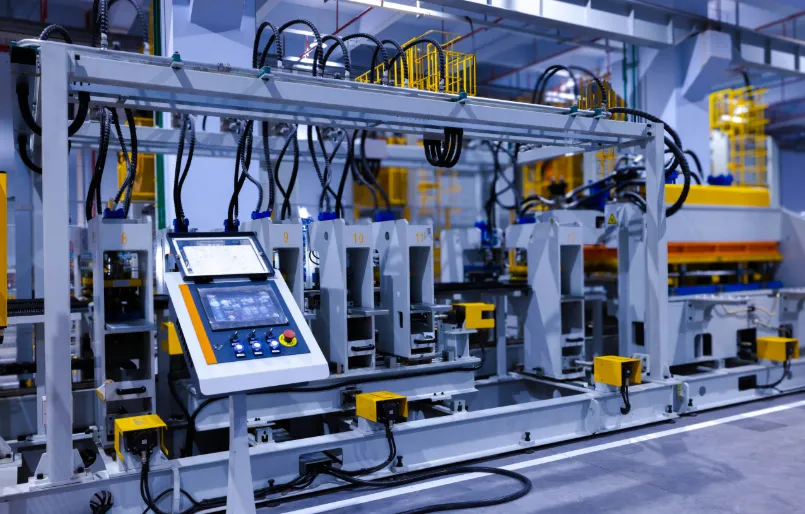 Key Components of CNC Equipment
Key Components of CNC Equipment
All CNC machines share fundamental mechanical and electronic subsystems that enable automated operation. The structural frame—constructed from cast iron, polymer concrete, or steel weldments—provides vibration-damped rigidity to withstand cutting forces exceeding 10kN in heavy machining centers. Precision guide systems (linear rails, box ways, or roller bearings) facilitate smooth axis movements, while ball screws or linear motors translate rotary motion into linear displacement with minimal backlash. Servo motors or closed-loop stepper motors drive each axis, with high-resolution encoders providing real-time position feedback to the control system. The spindle—ranging from 500W units in desktop routers to 40kW+ in industrial machining centers—delivers rotational energy to cutting tools at speeds from 100 RPM (for large boring operations) to 60,000 RPM (for micro-machining). Advanced CNC equipment incorporates automatic tool changers (ATCs) with 12-120 tool capacities, probe systems for workpiece measurement, and through-spindle coolant delivery at pressures up to 1,000 psi.
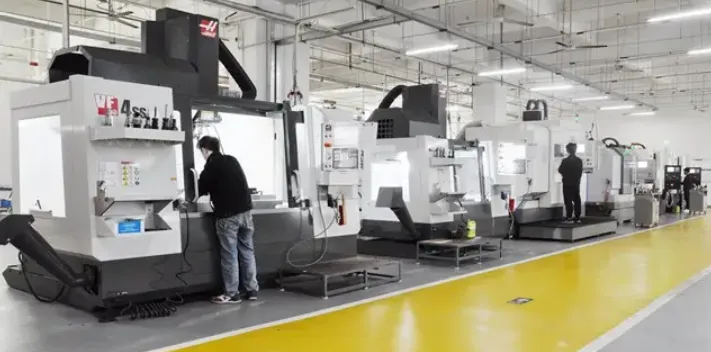
Control Systems and Software
The CNC controller acts as the machine’s brain, interpreting G-code instructions and coordinating all mechanical actions. Industrial controllers like Siemens SINUMERIK, Fanuc, and Heidenhain employ real-time operating systems to synchronize multi-axis movements with microsecond-level precision. Modern interfaces feature touchscreen HMIs (Human-Machine Interfaces) displaying 3D toolpath visualizations, machine diagnostics, and process monitoring data. CAM (Computer-Aided Manufacturing) software bridges design and production, generating optimized toolpaths through algorithms that consider material properties, tool geometry, and machine kinematics. Post-processors then convert these toolpaths into machine-specific G-code, accounting for unique mechanical behaviors like axis acceleration limits (typically 1-5 m/s²) and jerk control settings. Increasingly, CNC equipment integrates IoT capabilities for remote monitoring, with sensors tracking spindle vibration (<0.1 mm/s RMS in normal operation), temperature fluctuations (±0.5°C stability requirements), and power consumption to enable predictive maintenance.
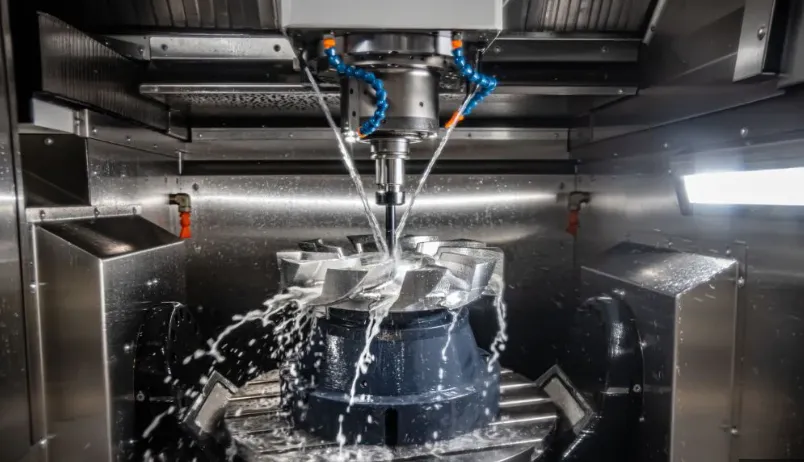
Material Processing Capabilities
CNC equipment handles an extensive range of materials, each requiring tailored machining strategies. For metals, aluminum alloys (6061-T6) are machined at surface speeds of 200-500 m/min with carbide end mills, while titanium (Grade 5) demands slower 30-60 m/min speeds and high-pressure coolant. Plastics like ABS and polycarbonate require sharp, polished tools (rake angles >10°) to prevent melting, whereas composite materials (CFRP) need diamond-coated tools and specialized dust extraction. Woodworking CNC routers employ high-speed spindles (18,000-24,000 RPM) and compression bits to cleanly cut across varying grain directions. The machines’ rigidity determines achievable tolerances—industrial vertical machining centers maintain ±0.025mm in steel, while desktop CNC routers typically achieve ±0.1mm in wood. Specialized CNC equipment exists for unique applications: wire EDM machines cut hardened tool steel with 0.02mm kerf widths, and 5-axis CNC mills contour complex geometries like impellers with 0.01° rotational accuracy.
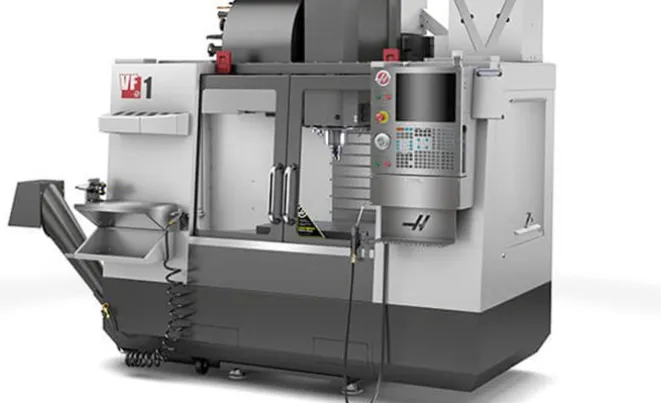
Industrial Applications and Economic Impact
CNC equipment underpins modern manufacturing across every major industry. Automotive plants utilize transfer lines with multiple CNC stations to machine engine blocks at rates of 60-120 parts/hour, holding bore tolerances of ±0.01mm. Aerospace manufacturers rely on 5-axis CNC mills to produce turbine blades from nickel superalloys, with surface finishes <0.8μm Ra. Medical CNC machines fabricate titanium orthopedic implants with 3D-printed porous structures and <20μm feature resolution. The global CNC equipment market, valued at $86 billion in 2023, reflects this widespread adoption, with compound annual growth of 7-9% driven by demand for precision components in renewable energy and electric vehicles. Small businesses benefit from benchtop CNC mills (<$20,000) that deliver 80% of industrial capabilities for prototype quantities, while high-volume manufacturers invest in turnkey CNC cells ($500,000-$2M) with robotic loading and AI-driven process optimization.
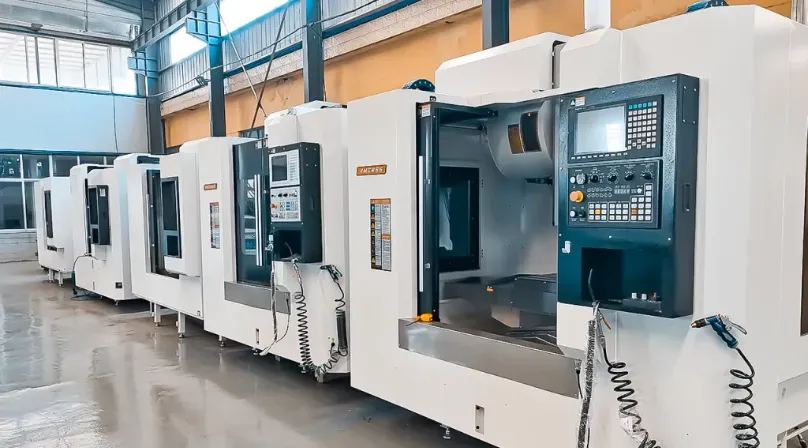
Technological Evolution and Future Trends
CNC equipment continues advancing through several transformative technologies. Hybrid additive-subtractive machines now combine laser metal deposition (LMD) with high-speed milling in single setups, enabling complex internal cooling channels for turbine components. Smart machine tools equipped with vibration sensors and adaptive control automatically adjust feeds/speeds when detecting chatter (frequency ranges of 200-5,000 Hz). The rise of nano-CNC systems achieves <1μm positioning accuracy for optical components and microfluidic devices. Standardization efforts like STEP-NC replace G-code with richer data models containing tolerancing and inspection criteria. Cloud-based CNC platforms enable real-time toolpath optimization across global factory networks, reducing programming time by 30-50%. These innovations ensure CNC equipment remains central to Industry 4.0, increasingly integrating with digital twins and machine learning systems to achieve unprecedented levels of precision and productivity.




